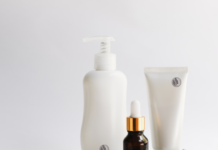
The sun is a source of life: without it many reactions essential for maintaining the balance of ecosystems could not take place. The human body also benefits from the sun: its direct connection with well-being, also (and not only) as an improvement in mood, is also demonstrated and shared in common language. A sociable and open person is said to have a “sunny” character.
Never like this year do we feel the need to escape from the memories of the lockdown just experienced. We leave the house to stay in the sun and soon we will start going to the sea to throw the past few months behind us. Our skin will therefore suffer the greatest impact from the sun’s rays.
The light from the sun is composed of different radiations, each of which is characterized by a wavelength: some of these are visible to the human eye (those that we can reconnect to the colors), while others do not (ultraviolet rays and infrared).
Tanning: what is – Ultraviolet radiation can damage the anatomical structures exposed therefore our primary barrier (the skin) develops defense tools. By taking on a darker color, it absorbs a more limited portion of the frequencies of the light spectrum. What happens is that the same solar radiation stimulates the melanocytes (cells present in the superficial layers of the epidermis) to synthesize melanin, the pigment that colors the hair, the skin, the hair and the eyes. By depositing in the skin, it is responsible for the accentuated coloring. Tanning, that golden color that we like so much, is actually one of the most powerful skin protection systems.
Sun exposure causes two reactions. The short-term reaction is represented by solar erythema, an event generated in part by UVB-type radiation but above all by infrared radiation, which overheats the skin. Erythema occurs within a few hours of exposure and reaches its peak within the next 24 hours. The skin becomes red, intense itching, a sensation of heat, dryness and flaking appear. The areas of the body most affected are the most exposed: neckline, shoulders, face, back of the feet.
Being linked to the overheating (and therefore also indirect) action of the sun, the erythema can appear even if it is parked under an umbrella and on days when the sky is cloudy. For the same reason, it is possible to prevent it by frequently refreshing the skin with fresh water, after a day at the beach, take a lukewarm shower and use a very moisturizing cream.
Long-term reactions are linked to the fact that the sun’s ultraviolet radiation (in particular UVA) activates chemical reactions in the skin that produce highly unstable substances (free radicals), which react easily with many biological molecules. This phenomenon accelerates the aging processes of cells and is the reason why the correct consumption of antioxidants through a balanced diet keeps the body young.
On the skin, the sun damages collagen; promotes the formation of dark spots located mainly on the skin of the face and extremities (skin dyschromia); it can cause summer acne which is a “photodermatosis” concerning the anatomical parts most directly affected by the infrared radiation of the sun (shoulders, face and décolleté).

How to prepare your skin for tanning – To prevent all these effects due to sun exposure, it is necessary to have a correct diet. A particularly useful substance is lutein, famous for improving eye health especially for the prevention of macular degeneration. Lutein is a powerful antioxidant of the carotenoid family, it is found in dark green leafy vegetables such as spinach, broccoli, lettuce, peas, watercress, radicchio, parsley, arugula, in various types of fruit, such as papaya, blackberries, raspberries, nectarines, in the wheat, and also in the egg yolk.
Many are the friendly substances of our skin in particular betacarotene (foods that contain it: carrots, peaches, apricots, watermelons, broccoli, arugula, melons, tomatoes), and polyphenols (foods that contain them: blueberries, grapes, tea, cocoa ) are an example of the most suitable substances to defend it from the aggression of the sun’s rays.
We also remember that vitamins A, C, E, selenium and coenzyme Q 10, important antioxidants, protect the skin from skin aging and damage from UV rays, and we find them in all foods of plant origin.+
Read more: Choosing a sunscreen that won’t harm you or the environment
Sunscreens: which to choose – The use of cosmetics is also one of our best allies to protect skin exposed to the sun. The use of sunscreens is a valid skin protection system, both from short-term and delayed effects. The necessary (although not sufficient) condition not to be adversely affected by exposure to the sun is, however, to use them in the best way: the application must take place half an hour before exposure to the sun and be renewed frequently, especially after the bathrooms and in case of abundant sweating.
To obtain effective prevention, it is important to know your risk factor, expressed by the skin type, a parameter that identifies individual fragility to the action of the sun and which depends on the amount of melanin present in the skin, hair, hair and eyes.
The classification starts from phototype 1, the most at risk which requires extreme photoprotection (skin and light eyes, ephelids, blond or red hair), at least dangerous, the number 6 (olive skin, eyes and black hair), which requires low photoprotection . Dermatologists recommend, in any case, to gradually expose the first few days and to avoid doing so between 11 and 16, when the sun’s rays have a vertical direction and therefore affect the skin with greater aggression.
When we choose sunscreen, we remember that every year we release from the sea from 4 to 6 thousand tons of cosmetic products in the areas of tropical coral reefs and about 14 thousand in the other seas (reference year 2017), asking for algae and corals for cleaning of the sea without precedent. To maintain the balance of the marine ecosystem, preferring biodegradable and eco-sustainable sunscreen.






































